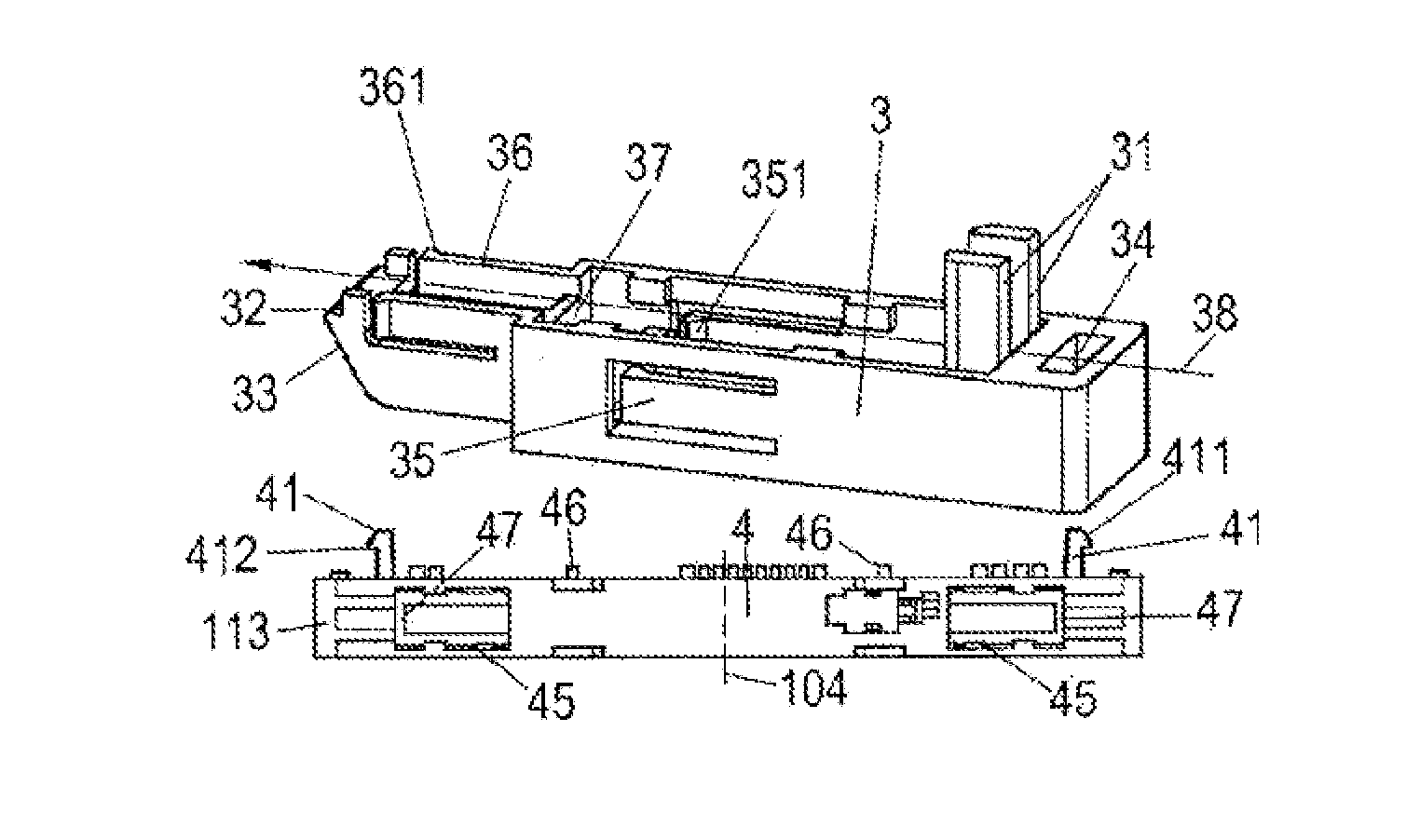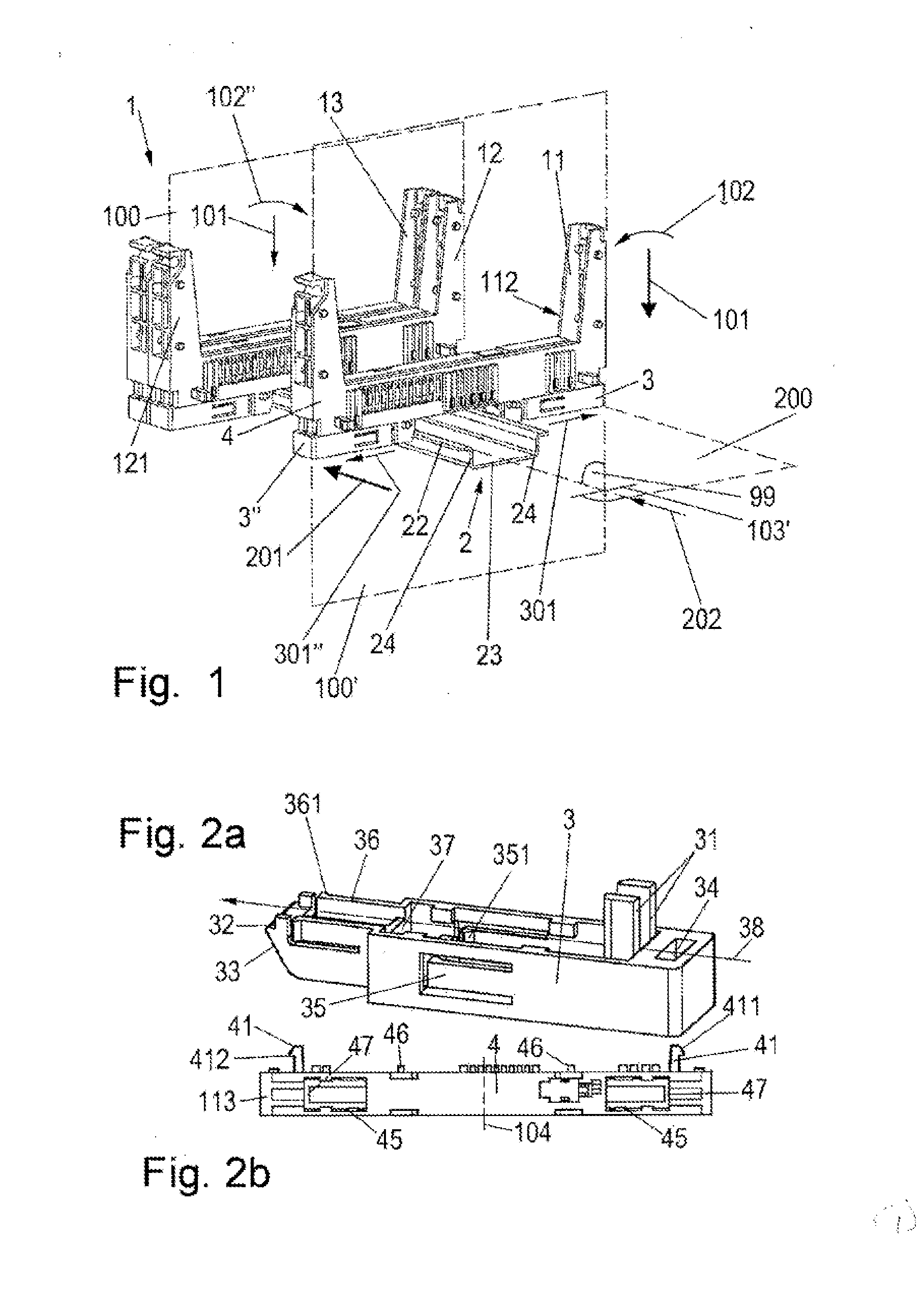Mounting rail and module latching system
a technology of mounting rails and latching systems, which is applied in the direction of couplings, rod connections, couplings, etc., can solve the problems of no additional electrical subassemblies can be mounted, no longer readily possible, and a lot of structural space, so as to facilitate the handling of the subassembly and the effect of simple separation
- Summary
- Abstract
- Description
- Claims
- Application Information
AI Technical Summary
Benefits of technology
Problems solved by technology
Method used
Image
Examples
Embodiment Construction
[0052]Referring first more particularly to FIG. 1, a plurality of module base members 11, 12 and 13 are arranged for mounting on a conventional top-hat type support rail 2 having a horizontal base portion 23, a pair of upwardly extending vertical leg portions 24, and a pair of outwardly extending flange portions 22. Connection block 1 comprises two mutually adjoining subassemblies 12, 13, which together are mounted on the support rail 2, as well as a subassembly 11, which is not yet mounted on the support rail.
[0053]Mounting rail 2 extends along a longitudinal axis 202 and has a U-shaped cross-section, with the flange portions 24 defining a horizontal mounting rail plane 200.
[0054]The adjoining subassembly arranged on mounting rail 2, which adjoins the subassembly 11 that is to be arranged on mounting rail 2, extends parallel to a subassembly plane 100. FIG. 1 further shows a second subassembly plane 100′ that is parallel to subassembly plane 100 in which extends the subassembly 11 ...
PUM
 Login to View More
Login to View More Abstract
Description
Claims
Application Information
 Login to View More
Login to View More - R&D
- Intellectual Property
- Life Sciences
- Materials
- Tech Scout
- Unparalleled Data Quality
- Higher Quality Content
- 60% Fewer Hallucinations
Browse by: Latest US Patents, China's latest patents, Technical Efficacy Thesaurus, Application Domain, Technology Topic, Popular Technical Reports.
© 2025 PatSnap. All rights reserved.Legal|Privacy policy|Modern Slavery Act Transparency Statement|Sitemap|About US| Contact US: help@patsnap.com



